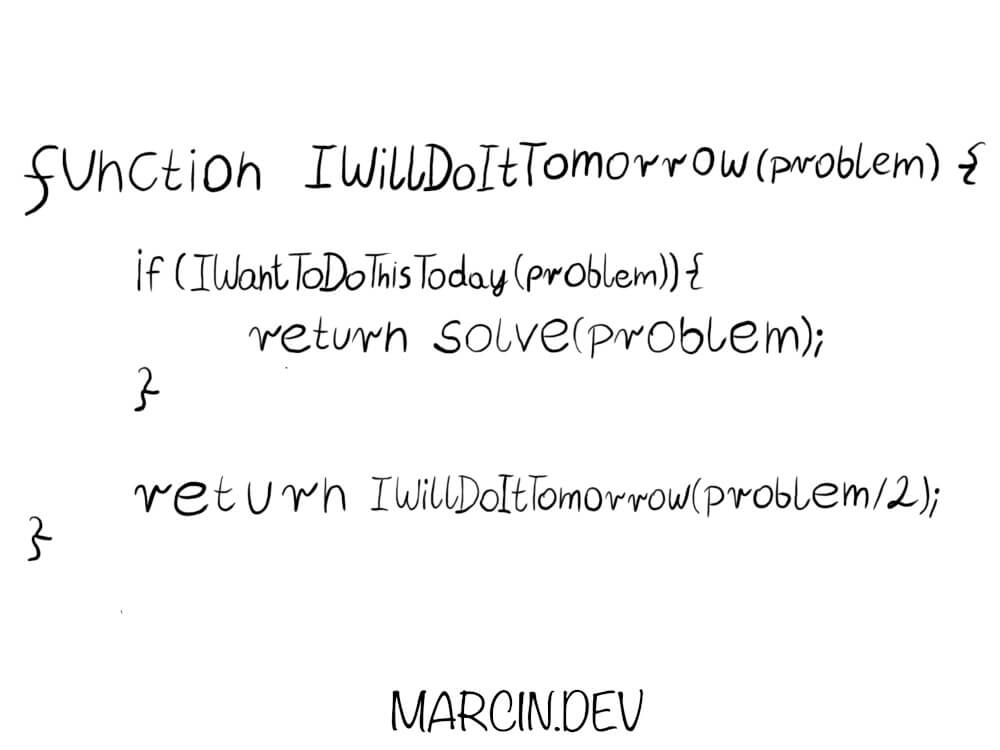Do czego służy Partial?
Spójrz na poniższy kod:
interface Product {
name: string ;
price: number ;
description: string ;
weight: number ;
}
Mamy tutaj typ Product wszystkie jego pola są wymagane . Więc jeśli spróbujesz stworzyć obiekt o typie Product nie definiując wartości dla wszystkich wymaganych pól TypeScript zgłosi błąd.
Kolejny kod:
const buildProduct = (): Product =>return {
name: randomName(),
price: randomPrice().
description: randomDescription(),
weight: randomWeight()
}
}
Powyższa funkcja tworzy obiekt typu Product . Przydatny builder , kiedy na przykład piszesz testy. Problem z tym kodem jest taki, gdy potrzebujesz przekazać wartości do konkretnych pól. Oczywiście możesz stworzyć obiekt i przypisać potrzebne wartości.
Można też tak:
const product: Product = buildProduct({ name: 'Super product' , price: 150 });
Jak to zrobić?
const buildProduct = (product: Product): Product
Taki zapis oczywiście nie zadziała. W takich sytuacjach sprawdzi się Partial :
const buildProduct = (product: Partial<Product>): Product =>return {
name: randomName(),
price: randomPrice().
description: randomDescription(),
weight: randomWeight(),
...product
}
}
Teraz zapis:
const product: Product = buildProduct({ name: 'Super product' , price: 150 });
Zadziała.
Partial jak widać pozwala na powiedzenie TypeScript : wartości danego typu są opcjonalne .
Strefa czasowa użytkownika
Piszesz aplikację, której działanie polega na podstawie tego, w jakiej strefie czasowej jest użytkownik? Inny powinien zostać wyświetlony dla użytkownika, który znajduje się w Azji, a inny dla kogoś z Europy?
Skąd mamy wiedzieć, w jakiej strefie czasowej jest użytkownik?
W tym wpisie znajdziesz sposób na pobranie strefy czasowej, w której znajduje się Twój użytkownik. Podanej w systemie IANA . To znaczy:
Europe/Warsaw
Asia/Bangkok
Wiele bibliotek od obsługi czasu korzysta z tego formatu.
Pobranie strefy czasowej użytkownika
Wystarczy wywołać:
console .log(Intl .DateTimeFormat().resolvedOptions().timeZone)
Metoda resolvedOptions obiekt, który zawiera właściwość timeZone . Wartość jest określona w systemie IANA .
Typescript i komponenty
Poniżej znajdziesz listę przydatnych informacji, jak dodać Typescript przy tworzeniu własnych komponentów:
Właściwości komponentu
Mamy komponent Person.jsx:
const Person = ({ name, weight, height } ) => {
return (
<div >
<div > Name: <strong > {name}</strong > </div >
<div > Weight: <strong > {weight} kg</strong > </div >
<div > Height: <strong > {height} cm</strong > </div >
</div > Jak dodać typy do właściwości komponentu?
Po pierwsze musisz stworzyć plik o rozszerzeniu: .tsx .
Na przykład: Person.tsx :
interface IPersonProps {
name: string ;
weight: number ;
height: number ;
}
const Person = ({ name, weight, height }: IPersonProps ) => {
return (
<div>
<div>Name: <strong>{name}</strong></ div>
<div>Weight: <strong>{weight} kg</strong></ div>
<div>Height: <strong>{height} cm</strong></ div>
</div>
)
}
Typ dla children
React umożliwia przekazanie komponentu listy komponentów do innego komponentu w taki sposób:
<ParentComponent><ChildrenComponent /></ParentComponent>
Robi się to poprzez specjalną właściwość o nazwie props .
Jak dodać typ do props ?
interface IPersonProps {
name: string ;
weight: number ;
height: number ;
children: JSX.Element | JSX.Element[];
}
const Person = ({ name, weight, height, children }: IPersonProps ) => {
return (
<div>
<div>Name: <strong>{name}</strong></ div>
<div>Weight: <strong>{weight} kg</strong></ div>
<div>Height: <strong>{height} cm</strong></ div>
{children}
</div>
)
}
function App() {
return (
<>
<Person name="Jan Kowalski" weight={85} height={190}>
<div>
<strong>Hobby:</ strong>
<span>Playing Tomb Raider</span>
</ div>
</Person>
</ >
);
}
Zwracany typ
Do funkcji Person , która tworzy komponent, można też dodać zwracany typ:
const Person = ({ name, weight, height, children }: IPersonProps): JSX.Element => {
return (
<div>
<div>Name: <strong>{name}</strong></ div>
<div>Weight: <strong>{weight} kg</strong></ div>
<div>Height: <strong>{height} cm</strong></ div>
{children}
</div>
)
}
Operator ??
Potrzebujesz sprawdzić, czy zmienna jest typu null lub undefined i ewentualnie dostarczyć alternatywną wartość? Użyj operatora: ?? .
Przykład:
null ?? 'no value' ;
undefined ?? 'no value' ;
Zasada działania: jeśli wartość po lewej stronie operatora jest null lub undefined to wybierana jest wartość alternatywna (z prawej strony).
W innym przypadku będzie wybierana wartość z lewej strony:
0 ?? 'no value' ;
-1 ?? 'no value' ;
"" ?? 'no value' ;
NaN ?? 'vo value' ;
false ?? 'no value' ;
Nowsze wpisy Poprzednie wpisy
